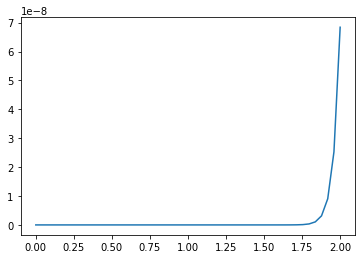Python – 统计中的偏正态分布
scipy.stats.skewnorm()是一个偏斜正态连续随机变量。它作为rv_continuous 类的实例继承自泛型方法。它使用特定于此特定发行版的详细信息来完成方法。
参数 :
q : lower and upper tail probability
x : quantiles
loc : [optional]location parameter. Default = 0
scale : [optional]scale parameter. Default = 1
size : [tuple of ints, optional] shape or random variates.
moments : [optional] composed of letters [‘mvsk’]; ‘m’ = mean, ‘v’ = variance, ‘s’ = Fisher’s skew and ‘k’ = Fisher’s kurtosis. (default = ‘mv’).
Results : skew-normal continuous random variable
代码#1:创建偏态连续随机变量
# importing library
from scipy.stats import skewnorm
numargs = skewnorm .numargs
a, b = 4.32, 3.18
rv = skewnorm (a, b)
print ("RV : \n", rv)
输出 :
RV :
scipy.stats._distn_infrastructure.rv_frozen object at 0x000002A9D843A9C8
代码#2:偏正态连续变量和概率分布
import numpy as np
quantile = np.arange (0.01, 1, 0.1)
# Random Variates
R = skewnorm.rvs(a, b)
print ("Random Variates : \n", R)
# PDF
R = skewnorm.pdf(a, b, quantile)
print ("\nProbability Distribution : \n", R)
输出 :
Random Variates :
4.2082825614230845
Probability Distribution :
[7.38229165e-05 1.13031801e-04 1.71343310e-04 2.57152477e-04
3.82094976e-04 5.62094062e-04 8.18660285e-04 1.18047149e-03
1.68525001e-03 2.38193677e-03]
代码#3:图形表示。
import numpy as np
import matplotlib.pyplot as plt
distribution = np.linspace(0, np.minimum(rv.dist.b, 3))
print("Distribution : \n", distribution)
plot = plt.plot(distribution, rv.pdf(distribution))
输出 :
Distribution :
[0. 0.04081633 0.08163265 0.12244898 0.16326531 0.20408163
0.24489796 0.28571429 0.32653061 0.36734694 0.40816327 0.44897959
0.48979592 0.53061224 0.57142857 0.6122449 0.65306122 0.69387755
0.73469388 0.7755102 0.81632653 0.85714286 0.89795918 0.93877551
0.97959184 1.02040816 1.06122449 1.10204082 1.14285714 1.18367347
1.2244898 1.26530612 1.30612245 1.34693878 1.3877551 1.42857143
1.46938776 1.51020408 1.55102041 1.59183673 1.63265306 1.67346939
1.71428571 1.75510204 1.79591837 1.83673469 1.87755102 1.91836735
1.95918367 2. ]

代码#4:改变位置参数
import matplotlib.pyplot as plt
import numpy as np
x = np.linspace(0, 5, 100)
# Varying positional arguments
y1 = skewnorm .pdf(x, 1, 3, 5)
y2 = skewnorm .pdf(x, 1, 4, 4)
plt.plot(x, y1, "*", x, y2, "r--")
输出 : 